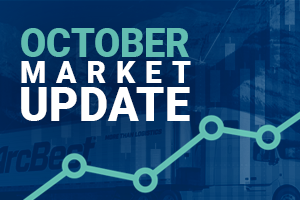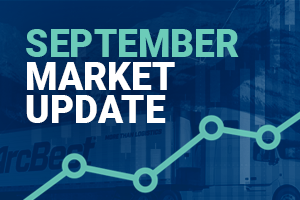June Market Update
Prepare for Peak Shipping Season
Using Commercial ReloCubes to Balance Costs
May Market Update
How ELDs Affect Shippers
The ELD mandate: where are we now?
According to an American Transportation Research Industry (ATRI) report, 2020 was the first year since 2012 that the ELD mandate has not been included in the Top Industry Issue Rankings. While that may be the case, related issues that affect shippers, like detention/delay and hours-of-service (HOS), remain top concerns. Learn more about the impact the ELD mandate has had on the industry, from implementat
December 2020 Market Update
What’s impacting supply and demand in the truckload market?
In the last two updates, we focused on how changing consumer behavior has altered the truckload market. Escalating retail sales, driven by a shift to online retail, has provided a catalyst for the robust demand we have experienced over the last several months. Increased demand against the backdrop of fixed truckload capacity has led to skyrocketing spot market rates. To get a clear sense of what’s happening, we need to closely monitor key indicators related to both demand and capacity.
What’s Going on in the Truckload Market Leading up to the Holiday Season?
Market Update: October 2020
The truckload market continues to be defined by shipper demand exceeding capacity
During September, national tender volumes spiked at over 16,000 (Chart 1), which appears to be a function of altered consumer behavior. As Americans continue their efforts to social distance, a transition to online shopping can be seen within the non-store retail subsector (NAICS 4541). As we enter the holiday season, expect volumes to remain elevated as inventories are replenished and retailers prepare for peak season.
September 2020 Market Update
High shipment volumes and tight truckload capacity bring challenges for shippers
Supply chains across the United States are experiencing the pain associated with skyrocketing shipment volumes and limited truckload capacity. Outbound tender volumes remain in uncharted territory at over 16,000 (Chart 1) — an increase of over 50% year-over-year (YOY). Increased demand and limited truckload capacity have resulted in a dramatic increase in truckload rates.











